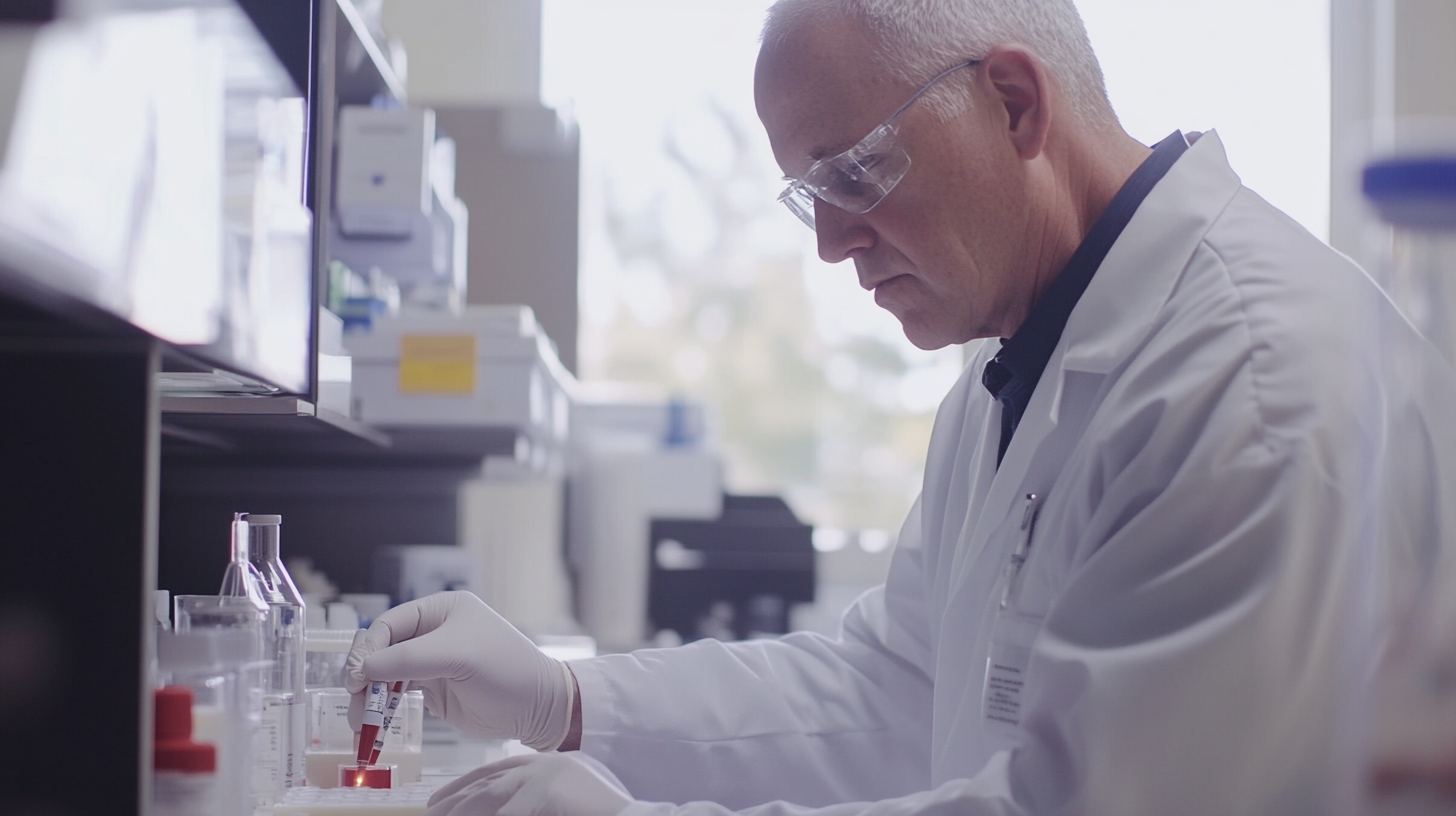In the rapidly evolving landscape of healthcare and pharmaceuticals, Drug Research stands as a cornerstone for innovative product development and global market access. As countries grapple with the complexities of drug regulations and varying market demands, understanding the essentials of drug research becomes paramount for global buyers. This comprehensive endeavor not only encompasses the scientific pursuit of new treatments but also involves navigating the intricate web of clinical trials, regulatory approvals, and market dynamics that determine the availability and effectiveness of pharmaceutical products.
For global buyers, being well-versed in the fundamentals of drug research is crucial for making informed decisions that can significantly impact health outcomes and market strategies. With the pharmaceutical industry at the forefront of medical advancement, knowledge of drug research empowers buyers to identify credible partners, evaluate drug efficacy, and ensure compliance with international standards. As we delve deeper into the key components of drug research, we will explore valuable insights that can enhance decision-making processes and foster successful collaborations in the global pharmaceutical arena.

In the realm of international procurement, understanding the key principles of drug research is crucial for buyers seeking to navigate a complex landscape. One fundamental aspect is the emphasis on rigorous scientific evaluation. Buyers must ensure that any prospective drug has undergone thorough clinical trials and has substantial evidence supporting its safety and efficacy. This is not only a matter of regulatory compliance but also a vital component in building trust with healthcare providers and patients alike.
Another essential principle relates to transparency in the drug development process. Global buyers should seek to obtain detailed information about a drug's research background, including the methodologies employed in trials and the qualifications of the research team. Transparency helps in mitigating risks associated with counterfeit products and ensures that procurement decisions are based on reliable data.
Furthermore, international buyers should be well-versed in the ethical considerations surrounding drug research. Understanding the ethical standards that govern clinical trials, such as informed consent and the rights of participants, is essential. This knowledge not only enhances the credibility of procurement practices but also aligns with the broader corporate responsibility to support humane and ethical drug development globally.
In the rapidly evolving landscape of pharmaceutical procurement, identifying reliable sources for pharmaceutical products has become crucial for global buyers. According to a recent report by the IMS Institute for Healthcare Informatics, approximately 80% of pharmaceuticals consumed in the United States are sourced from foreign manufacturers, underlining the importance of robust verification processes for global buyers. The quest for reliable suppliers demands not only an understanding of sourcing strategies but also a comprehensive assessment of supplier credibility.
One of the pivotal factors in sourcing reliability is the compliance with Good Manufacturing Practices (GMP). The World Health Organization (WHO) reports that adherence to GMP can significantly reduce the risk of receiving counterfeit or substandard products. Additionally, leveraging databases such as the European Medicines Agency’s EudraGMDP can assist buyers in validating the certifications of manufacturers and ensuring they meet international standards. Buyers must also engage in thorough due diligence, checking for third-party certifications and monitoring supplier performance through key quality indicators.
Furthermore, industry trends suggest that establishing long-term relationships with suppliers can enhance reliability. A study by McKinsey & Company indicates that companies with strategic partnerships in their supply chain benefit from increased transparency and improved product traceability. As the global market faces challenges such as supply chain disruptions and regulatory changes, prioritizing dependable sources for pharmaceuticals not only safeguards buyer interests but also bolsters patient safety on a global scale. In this complex environment, making informed decisions about supplier partnerships will be essential for responsible procurement.

Navigating the regulatory landscape in drug research is crucial for global buyers, particularly in an era where biopharmaceutical innovations are accelerating. The complexity of regulatory standards can be daunting, especially with emerging therapeutic modalities like lipid nanoparticle (LNP) drugs. Developers are required to adopt proactive strategies for regulatory approval, ensuring that they meet the rigorous demands set forth by governing bodies. This includes understanding the detailed requirements for safety and efficacy, which has become essential as the biopharmaceutical market continues to evolve, especially in regions like Japan and Asia-Pacific.
Moreover, the landscape is not static. Regulatory frameworks are continuously adapted to address significant challenges such as pandemics. The rapid changes in health threats necessitate timely updates to regulations, allowing for quicker responses in drug development processes. For example, the introduction of new unified guidelines for drug interaction studies in 2024 will require drug developers to stay well-informed and agile.
Additionally, as the demand for botanical drugs grows, the pathway to regulatory approval for these traditional therapies also demands careful navigation. Understanding specific guidelines and market expectations becomes vital for ensuring successful approval and market entry. For global buyers, familiarizing themselves with these varied regulatory standards is not just beneficial—it’s a prerequisite for successful integration and investment in the global drug landscape.
When assessing drug efficacy and safety for market entry, it is crucial for global buyers to navigate a complex landscape of regulatory requirements and scientific validation. According to a report by the IQVIA Institute for Human Data Science, the average time to bring a new drug to market can exceed ten years, with development costs reaching approximately $2.6 billion. This extensive timeline underscores the importance of thorough evaluation processes that ensure a drug's effectiveness and minimize potential risks.
The efficacy of a drug is typically assessed through multiple phases of clinical trials. Phase II trials often focus on determining the optimal dose and further establishing effectiveness, while Phase III trials involve larger populations to provide comprehensive data on the drug's benefits. As reported by the FDA, around 70% of drugs that enter clinical trials fail to secure approval in the late-stage Phase III trials due to insufficient efficacy or unexpected safety concerns. This statistic illuminates the need for careful analysis and evaluation of both clinical data and market needs.
Safety assessments are equally critical, governed by stringent regulatory frameworks. In many regions, the post-marketing surveillance phase is mandated to monitor long-term effects and detect any rare adverse events that could emerge once the drug is widely used. A study published in the Journal of Clinical Pharmacology indicates that nearly 5% of drugs marketed in the US have been subsequently withdrawn or required safety updates due to significant adverse effects identified post-approval. For global buyers, understanding these multifaceted evaluation processes is key to mitigating risks and ensuring that investments in drug development and procurement are sound and scientifically justified.

Building successful partnerships in drug sourcing is essential for global buyers to navigate the complexities of the pharmaceutical landscape. First and foremost, establishing clear communication channels with suppliers is vital. Regular updates and open discussions about sourcing needs can help prevent misunderstandings and foster a cooperative environment. This transparency not only builds trust but also allows both parties to adapt to changing market dynamics and regulatory environments.
Furthermore, it’s crucial to evaluate potential partners thoroughly. Buyers should assess a supplier’s regulatory compliance, quality control measures, and market reputation. By implementing a robust due diligence process, buyers can identify suppliers who meet their stringent quality standards and align with their operational goals. Additionally, leveraging technology such as digital platforms can streamline the sourcing process, making it easier to monitor supplier performance and track compliance over time.
Finally, cultivating long-term relationships with suppliers can yield significant benefits. Engaging in collaborative projects, sharing insights on market trends, and co-developing products can strengthen these partnerships. By investing in these relationships, global buyers can ensure a reliable and high-quality supply chain, which ultimately leads to better patient outcomes and enhanced business performance.
